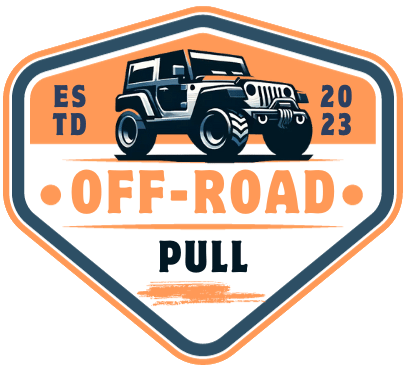Winches are vital tools for various applications, from off-road recovery to industrial lifting. However, the efficiency and safety of a winch depend heavily on its regular maintenance and testing.
Testing a winch, especially without a remote control, is crucial to ensuring it operates correctly when you need it most.
This article explores effective methods for winch testing, emphasizing the need to perform these tests manually or electrically to maintain optimal performance.
Safety Precautions
Before diving into the specifics of winch testing, it is essential to prioritize safety. Adhering to safety guidelines not only protects you but also extends the life of your winch.
Always wear appropriate safety gear, including durable gloves, safety glasses, and sturdy footwear, to safeguard against potential injuries.
When handling heavy loads, ensure stability and control to prevent accidents. Keep bystanders at a safe distance during testing to avoid any unforeseen hazards.
Method 1: Manual Testing
Manual testing of a winch is an essential procedure that enables you to closely assess the mechanical aspects of your winch.
This hands-on approach allows you to identify any operational issues that may not be apparent through visual inspections alone.
1. Engage the Clutch: The first step in manual testing is to engage the clutch of the winch. The clutch is a mechanism that allows the winch drum to either rotate freely or lock in place when engaged.
By engaging the clutch, you enable the drum to rotate, which is necessary for spooling the cable in and out without resistance.
2. Disengage the Brake: The next step involves disengaging the brake. The brake is designed to hold the winch drum in place when the winch is under load or when it is not operating.
Disengaging the brake allows you to manually pull the cable out from the drum, simulating the action of lowering a load.
This step is crucial for testing how smoothly the cable can be released and retracted.
3. Manually Pull Out the Cable: With the clutch engaged and the brake disengaged, manually pull the cable out from the winch.
This should be done slowly and steadily to carefully observe the cable’s movement. Pay attention to any snagging, sticking, or uneven spooling of the cable as it comes off the drum.
These could be signs of issues with the winch’s internal mechanisms or the cable itself.
4. Wind the Cable Back In: After extending the cable to a satisfactory length, manually wind it back onto the drum. This process should be smooth with consistent resistance.
Difficulty in winding the cable back, or if the cable does not neatly spool onto the drum, can indicate problems such as a misaligned drum, an issue with the clutch or brake settings, or damaged cable guides.
5. Check Cable Tension and Condition: Once the cable is fully retracted, check the tension. The cable should be taut but not overly tight, as excessive tension can strain the winch motor during operation.
Additionally, inspect the entire length of the cable for frays, kinks, or signs of wear and tear. Damaged cables are a major safety hazard and should be replaced immediately.
6. Functionality Checks: Finally, engage and disengage the clutch and brake several times to ensure they are functioning correctly.
Listen for any unusual sounds and feel for any undue resistance or ease in their operation. These checks help confirm the operational integrity of these critical components.
Method 2: Electrical Testing
Electrical testing is a critical part of maintaining a winch, particularly for those models that incorporate electrical components like motors and solenoids.
This type of testing focuses on ensuring the electrical integrity and functionality of these parts.
1. Inspect Motor and Solenoid Connections: The first step in electrical testing involves a thorough inspection of the motor and solenoid connections.
Start by examining each connection for signs of wear, corrosion, or damage. Corrosion can interfere with the electrical conductivity, potentially leading to poor performance or failure.
Ensure that all connections are tight and clean. Loose connections can cause intermittent power issues or could be dangerous during operation.
2. Testing for Electrical Continuity: Using a multimeter, set it to the continuity setting. This test checks if there is a complete path for current to flow from one point to another.
Test each connection by placing the multimeter probes on each end of the electrical circuit – for example, between the winch control and the solenoid, and then between the solenoid and the motor.
A continuous beep or a zero resistance reading indicates good continuity, meaning the electrical path is intact.
3. Check Voltage Levels: After confirming continuity, switch the multimeter to the voltage measurement setting.
Testing voltage levels is crucial to ensuring that each component receives the correct amount of power needed for operation.
Connect the multimeter to the power input of the winch and measure the voltage while the winch is operating.
Compare this reading with the specifications provided by the manufacturer. Significant deviations from the specified voltage could indicate issues with the power supply, wiring, or even the motor itself.
4. Solenoid Function Test: The solenoid acts as a switch, controlling power from the battery to the winch motor. Test the solenoid by activating the winch control and observing if the solenoid engages and disengages correctly.
Listen for a clear click sound from the solenoid as it operates. If the solenoid is sluggish or fails to actuate, it might need cleaning or replacing.
5. Motor Performance Check: Finally, assess the performance of the motor. With the winch operating, listen for any unusual noises such as grinding or stuttering, which could indicate internal wear or electrical issues within the motor.
Check for excessive heat, which is a sign of overloading or a failing motor. These symptoms require further investigation, potentially leading to motor servicing or replacement.
Troubleshooting Common Issues:
During the testing process, you may encounter some common issues. Here are a few troubleshooting tips:
- Cable binding or tangling: Carefully unwinding the cable and inspecting it for damage can often resolve this issue. Lubrication may also help prevent future binding.
- Motor failure: If the motor fails to operate or makes unusual noises, it may need to be replaced. Check for obstructions, damaged wiring, or a faulty solenoid.
- Brake malfunction: If the brake fails to engage or disengage correctly, it may need adjustment or replacement. Consult your winch’s manual for specific instructions.
When to Seek Professional Help:
While many winch testing and maintenance tasks can be performed by the owner, there may be situations when seeking professional assistance is advisable.
If you encounter issues beyond your expertise or experience, or if the winch requires major repairs or component replacements, it’s recommended to consult a qualified professional or the winch manufacturer.
Safety should always be the top priority, and attempting complex repairs without proper knowledge or tools can put you at risk of injury or further damage to the winch.
Conclusion
Regular testing and maintenance of your winch are indispensable for ensuring its performance and durability.
Whether manually testing the mechanical components or conducting electrical tests, each step is crucial for identifying potential issues and preventing future failures.
Always follow stringent safety protocols during testing and maintenance.
By understanding how to effectively test and care for your winch, you can ensure it remains a reliable partner in all your lifting and hauling endeavors.

